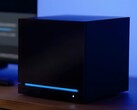Thanks to AMD accidentally leaking the source code of FSR 4, users have succeeded in getting FSR 4 working on hardware that doesn’t support the tech. FidelityFX Super Resolution 4, or FSR 4, is AMD’s latest crack at giving Nvidia’s Deep Learning Super Sampling, or DLSS, a run for its money. Unlike previous iterations, FSR 4 is an ML-based solution that has proven to be a major improvement over FSR 3/2, and it can now keep up with Nvidia’s best.
Officially, FSR 4 is only supported on the RX 9000 RDNA 4 GPUs, which means that folks running perfectly capable RDNA 3 or RDNA 2 cards can’t take advantage of the image upscaler. This also includes handheld consoles like the Steam Deck and the Asus ROG Ally, both of which run Ryzen APUs with RDNA 2 and RDNA 3 iGPUs, respectively.
However, if you own a Steam Deck, you can give FSR 4 a shot by just downloading and replacing a few “.dll” files in supported games. Deck Wizard on YouTube has uploaded a guide on how to run FSR 4 on the Steam Deck (Available on Amazon). From downloading the required FSR 4 files to integrating within supported games like Cyberpunk 2077, the process is super simple and takes just a few minutes.
The video, which is linked below, shows FSR 4 running in Cyberpunk 2077 and Marvel’s Spider-Man. The image quality improvement enabled by FSR 4 is massive, but the performance takes a visible hit. This is to be expected as FSR 4 requires specialized hardware to run properly. Since the Steam Deck’s custom AMD APU has an RDNA 2 iGPU, FSR 4 puts an additional burden on the already weak iGPU.
That said, the beauty of PC gaming is that gamers always find a way. So, we could see some performance enhancements in the future. Moreover, it’d be interesting to see how FSR 4 behaves on more powerful handheld consoles like the Asus ROG Ally and the Lenovo Legion Go S (Available on Amazon for $649.99).
Source(s)
Deck Wizard on YouTube, Teaser image source: Valve, Kim Eang Eng on Unsplash, edited

































